Summary:
Plastic crusher blades are essential for the efficiency and productivity of plastic recycling machines. This guide explores the signs of blade wear, the factors influencing their lifespan, and tips for optimizing performance. Learn how timely replacement and proper maintenance of plastic crusher blades can improve your operations and reduce costs.
Introduction
Efficient recycling relies heavily on the performance of plastic crusher blades. These critical components are responsible for breaking down plastic waste into smaller pieces, ensuring smooth operations in recycling processes. Over time, even the highest-quality blades experience wear and tear, which can lead to reduced productivity, higher energy consumption, and compromised output quality.
This article explains how to identify the signs of wear in your plastic shredder blades, determine the optimal replacement frequency, and extend their lifespan with practical tips. By taking a proactive approach to blade maintenance, businesses can minimize downtime and operating costs while maximizing efficiency.
Why Blade Wear Matters
The wear and tear of plastic crusher blades may seem like a minor issue, but it significantly impacts the overall efficiency and profitability of recycling and manufacturing operations. Here’s why maintaining and replacing your blades on time is crucial:
1. Decline in Efficiency
Worn-out blades lose their sharpness, reducing their ability to cut plastic effectively. This leads to:
- Increased processing time: A dull blade can take up to 30% longer to crush the same amount of material compared to a sharp one.
- Higher energy consumption: Research indicates that dull blades increase energy usage by 15–25% per operational cycle, which can translate to thousands of extra dollars in annual electricity costs for high-volume facilities.
- Added machine strain: Worn blades force the machine to work harder, potentially shortening the lifespan of other components like motors and gears.
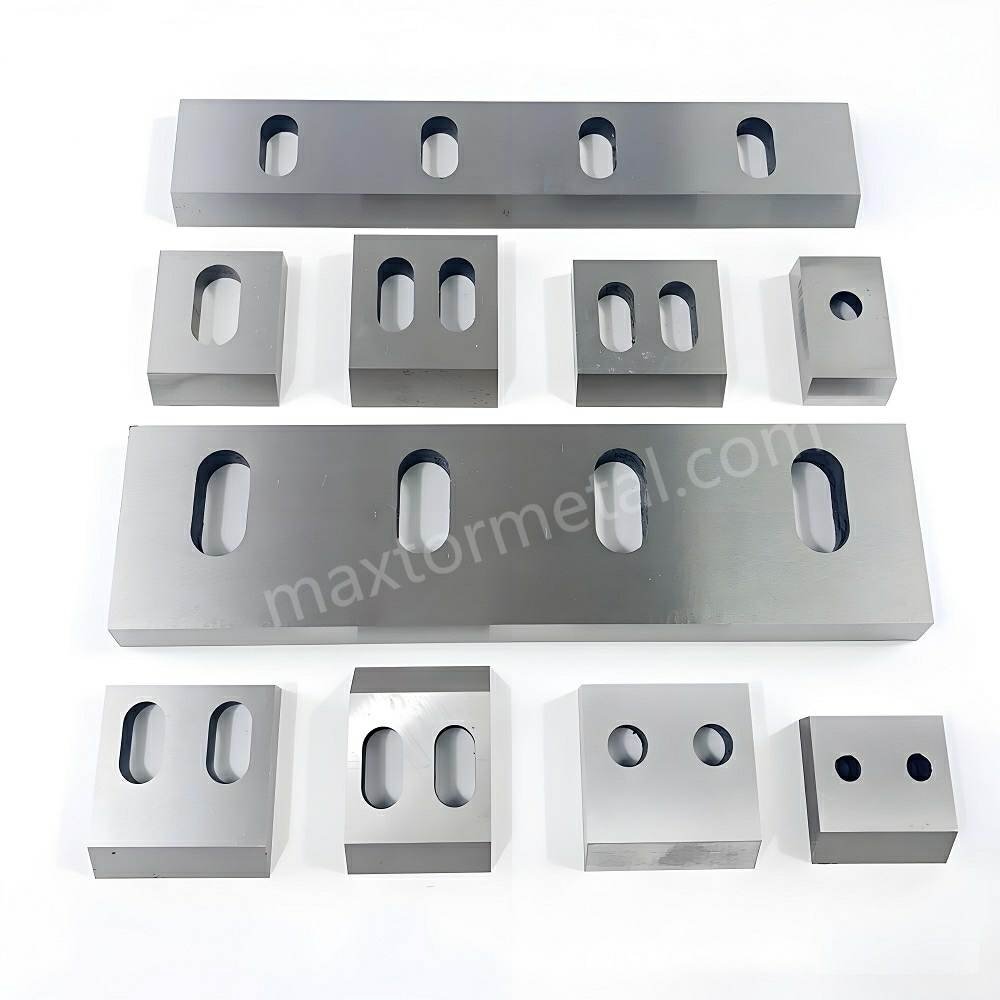
2. Poor Output Quality
The goal of crushing plastics is to produce uniform, high-quality granules or flakes suitable for reuse. When blades wear down, the output becomes inconsistent. Common problems include:
- Irregular particle sizes that require additional processing.
- Material contamination caused by overheating or improper cutting.
This can disrupt downstream operations, such as extrusion or molding, leading to rejected batches and wasted resources.
3. Increased Maintenance Costs
Using damaged or worn-out industrial shredder knives can lead to cascading failures in your equipment:
- Over time, uneven cuts cause imbalances in the rotor, leading to vibrations that damage bearings and shafts.
- Emergency repairs for these issues can cost 3–5 times more than scheduled maintenance.
Neglecting blade maintenance doesn’t just reduce efficiency—it can result in higher operational costs, more frequent downtimes, and safety hazards.
Signs That Your Plastic Crusher Blades Need Replacement
Regular inspection of your plastic crusher blades is essential for identifying potential issues before they escalate. Below are detailed signs that indicate it’s time for a replacement:
1. Visible Damage
Examine your blades closely during maintenance. Look for:
- Chips and cracks: Even small cracks can grow under pressure, leading to catastrophic blade failure.
- Rounded edges: These indicate significant wear and reduce cutting efficiency.
- Surface discoloration: Overheated blades often display bluish or darkened patches, signaling metal fatigue.
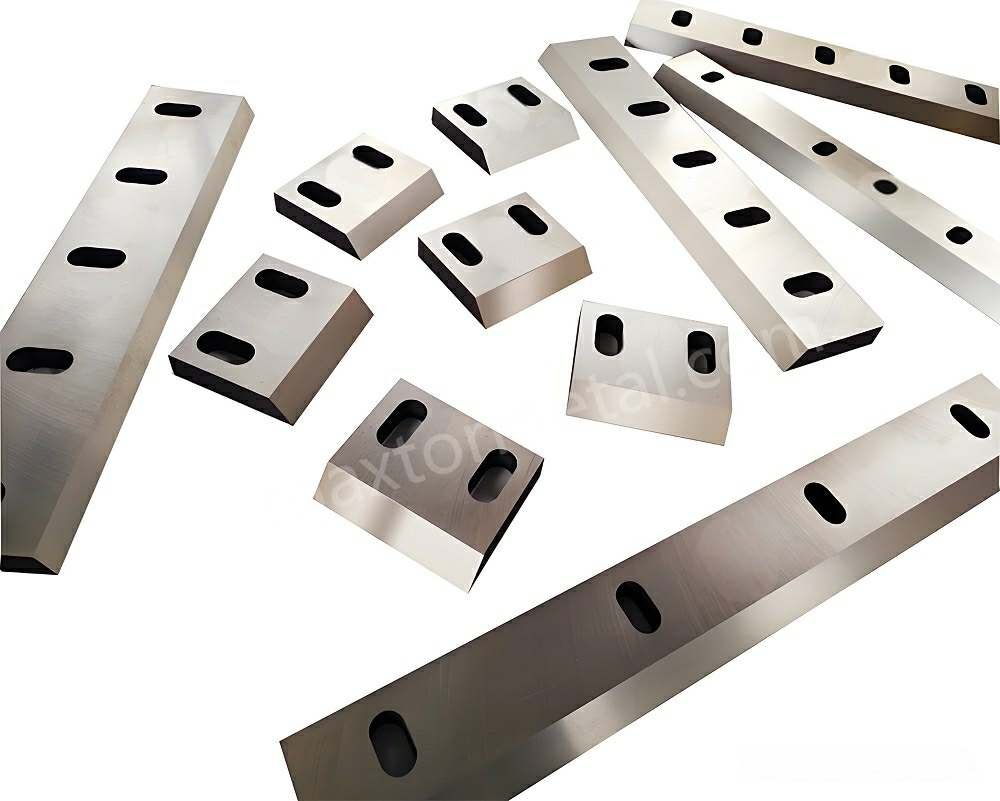
2. Performance Issues
When the blades are worn, your equipment’s performance will decline in measurable ways:
- Lower throughput: Operators may notice that machines process fewer materials within the same time frame.
- Frequent blockages: Blunt blades struggle to cut efficiently, causing clogs in the shredder chamber.
- Increased noise and vibration: These are often signs of imbalance due to uneven blade wear.
3. Decline in Output Precision
Output material should meet strict size and quality standards for reuse or further processing. Worn blades produce:
- Irregularly sized flakes that require reprocessing, doubling workload.
- Poorly shredded plastics that may not meet buyer or factory specifications.
Being proactive about blade condition can prevent costly disruptions. Implementing a checklist for visual and performance inspections is a simple but effective step toward optimal operations.
Factors Affecting Blade Wear and Lifespan
The rate at which plastic crushing machine blades wear out depends on several factors, each offering opportunities for improvement:
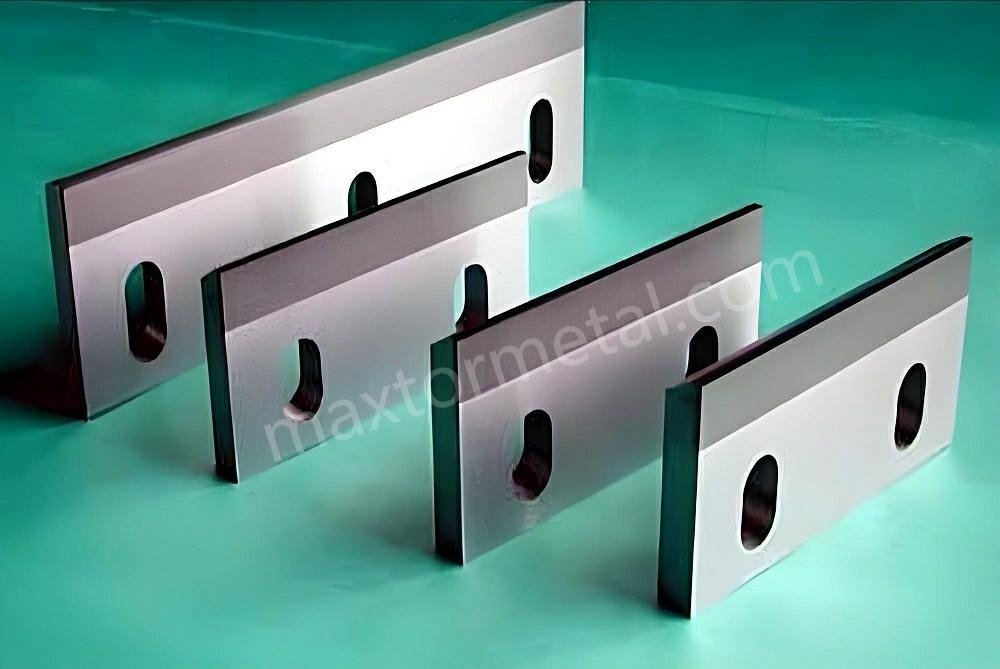
1. Material Type
Some plastics are more abrasive than others, wearing down blades faster:
- Hard plastics like polycarbonate (PC) or acrylonitrile butadiene styrene (ABS) require tougher blades.
- Contaminated materials (e.g., with sand or metal) cause up to 50% more wear compared to clean materials.
2. Machine Settings
Incorrectly configured settings can hasten blade deterioration:
- Excessive pressure increases friction, overheating the blades.
- Misaligned components cause uneven wear, reducing blade lifespan by up to 40%.
3. Blade Material and Quality
The durability of your granulator blades depends on the materials used:
- High-carbon steel blades typically last 30–40% longer than standard stainless steel.
- Tungsten carbide-coated blades are ideal for high-volume operations, offering wear resistance up to 10 times that of uncoated blades.
4. Operational Practices
Poor practices can significantly accelerate wear:
- Overloading machines causes undue strain, leading to uneven cutting and faster degradation.
- Inconsistent feeding of materials results in irregular stress on blades, reducing their effectiveness.
Regularly reviewing and optimizing these factors can improve the lifespan and reliability of your industrial shredder knives, minimizing replacement costs.
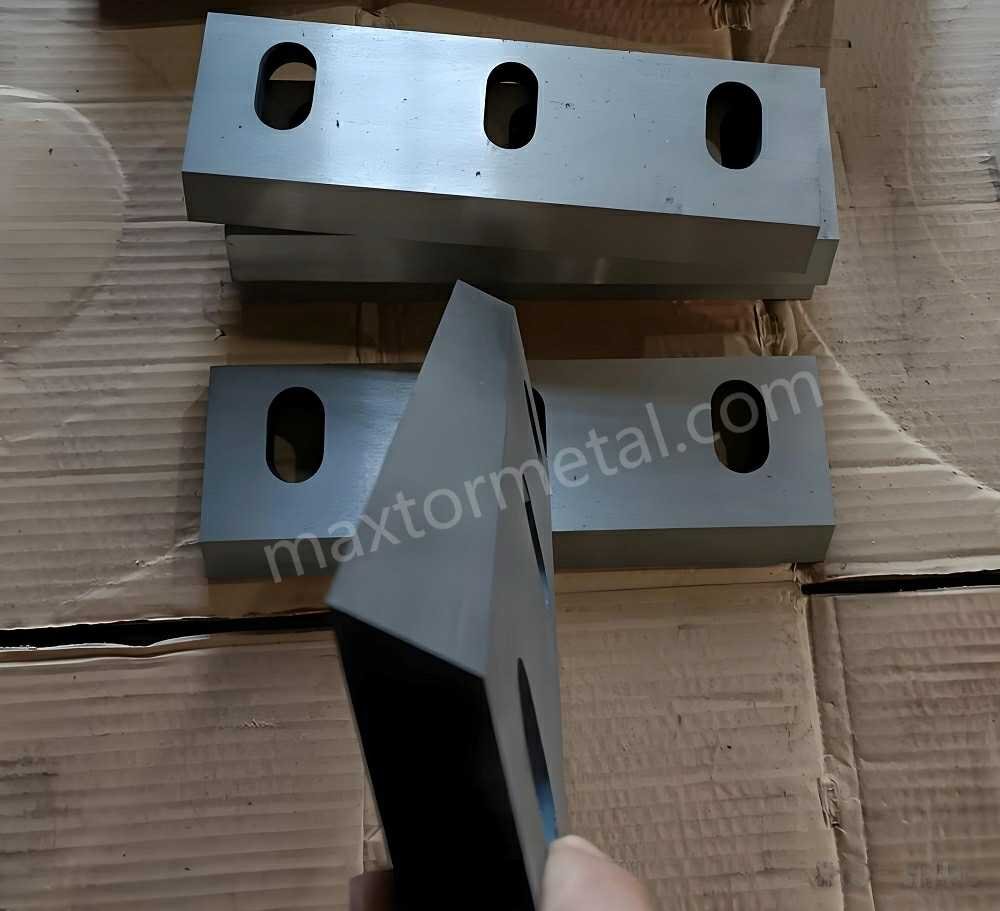
Optimal Replacement Frequency
1. Light Usage
Machines processing soft plastics or operating on a part-time basis may only need blade replacement once every 6–12 months.
2. Heavy-Duty Usage
High-volume facilities processing hard or abrasive materials typically replace blades every 3–6 months.
- For example, a facility handling fiberglass-filled plastics may need replacements every 2 months due to increased wear rates.
3. Monitoring Metrics
Data-driven decisions can enhance your replacement strategy:
- Use sensors to track blade vibration, cutting speed, or energy consumption. Deviations from baseline performance often signal the need for replacement.
Tips to Extend the Life of Plastic Crusher Blades
1. Preventative Maintenance
- Schedule routine blade inspections and cleanings every 2–4 weeks.
- Apply high-temperature lubricants to moving components to reduce friction.
2. Optimize Loading Practices
- Limit material loads to the machine’s rated capacity.
- Use pre-sorting systems to eliminate contaminants like metals, which can damage blades.
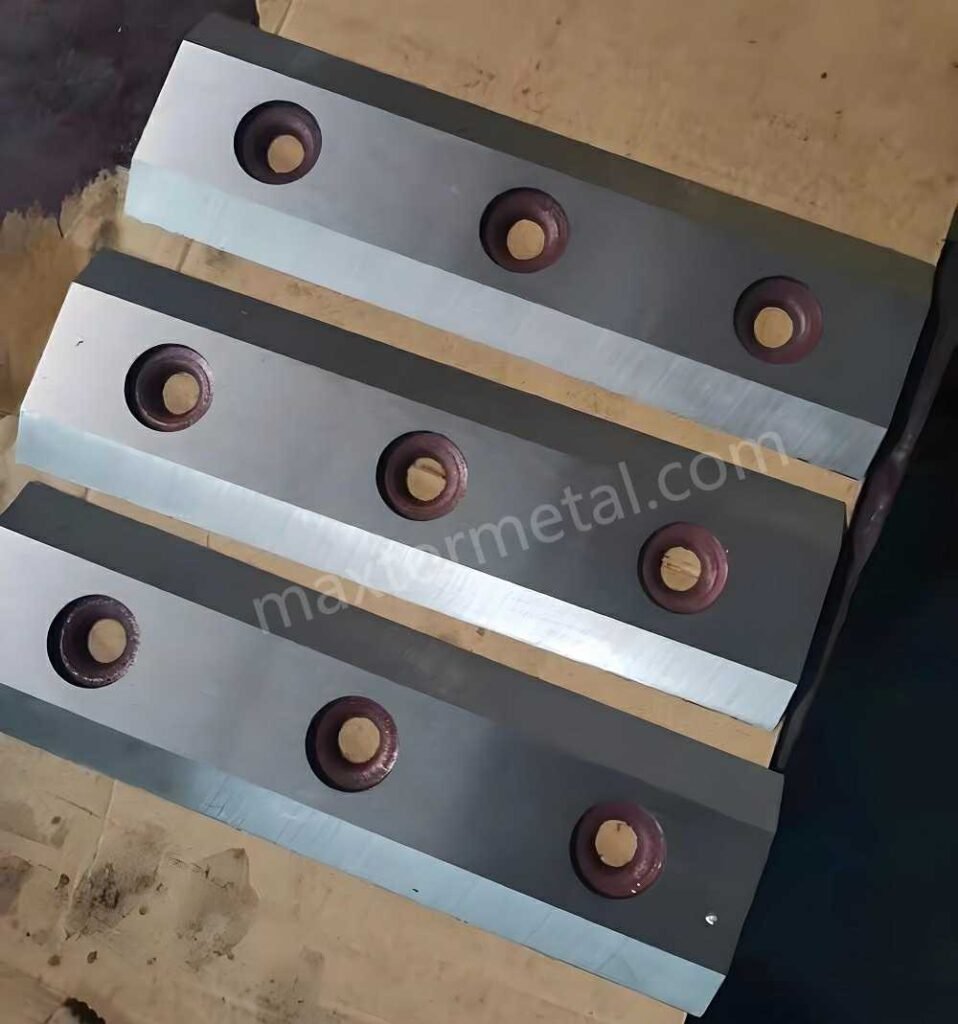
3. Invest in High-Quality Blades
While premium industrial shredder knives may cost 20–30% more initially, they often last twice as long, saving money in the long run.
Adopting these measures can reduce maintenance costs by 15–25% annually while improving operational uptime.
Selecting the Right Blades for Replacement
1. Ensure Compatibility
Check your crusher model and match replacement blades to its specifications. Incorrectly sized or mismatched blades can lead to machine inefficiency.
2. Assess Quality Standards
Look for certifications or performance guarantees from suppliers. For example, ISO-certified blades often offer higher durability and consistency.
3. Compare Supplier Offerings
Work with reputable suppliers who can provide expert guidance on blade selection. Reliable providers often offer bulk discounts, warranty options, or maintenance packages.
Conclusion: Act Now for Better Performance
Timely maintenance and replacement of plastic crusher blades are not just operational necessities—they are strategic investments in your business. With proactive monitoring, quality blade selection, and optimized practices, you can achieve greater efficiency, reduce costs, and minimize downtime.
Ready to enhance your operations? Contact us today for expert advice and high-quality blades tailored to your needs.



4 Responses